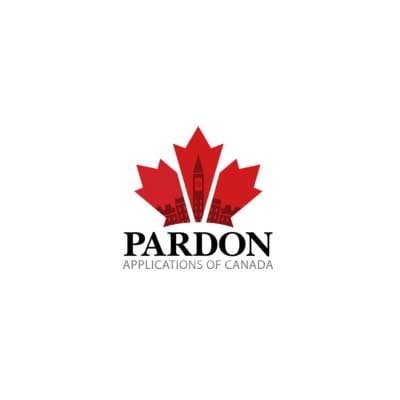
Pegah Memarpour, freelance columnist for Pardon Applications of Canada, explores the newly legislated Bill C-32, and suggests that many experts and victim advocacy groups feel the changes are not enough.
A “historical legislation” that puts victims at the “heart of the justice system” is what Harper proclaims the new Bill C-32 will be for Canadians who have been victimized by crime.
What has been coined as the Canadian Victim Bill of Rights is part and parcel with the conservative government’s recent plans for “safe streets and communities”. The 30 some odd bills that have been implemented since 2006 by the government, including Bill C-10 has primarily focused on tough on crime initiatives, making punishments more punitive and rehabilitation secondary.
Although this new Bill is focused on victims, it is far from the exception to the government’s new tough on crime trend.
What Does Bill C-32 Do?
The new bill makes several new legislations that will make changes to how victims interact with the justice system at a federal level.
The changes include:
1) Rights to information: victims can receive general information regarding the justice system, victim’s services and programs, and specifics about the case (e.g., progress, investigation, prosecution, and sentencing). This includes an up to date photo of the offender upon release.
2) Right to protection: victims would have their privacy and security rights protected throughout the justice process (e.g., their identity would be protected from public disclosure).
3) Right to participation: victims would have the right to give their views about any decisions made throughout various stages (e.g., parole hearings), and can provide a victim impact statement.
4) Right to restitution: victims would have the right to have courts consider making a restitution order for all offences where it can be calculated.
How Does It Help?
Experts say these changes are long overdue and important for victims as they will now have a more meaningful place within the justice system.
Historically, victims have had few rights during the justice process. In the majority of cases victims were only heard when they were called as witnesses – which tended to be rare – or if they provided witness impact statements. Even in those cases, the statements tended to be censored before ever getting to a judge.
With the implementation of the new legislation, victims will find that they have easier access to resources and more opportunities to have themselves heard by the courts.
“Out of the 1.6 million Canadians who are victims of violent crime each year, less than half report the incident.”
Where Does It Fall Short?
Unfortunately, many experts and victim advocacy groups, such as The Canadian Resource Centre for Victims of Crime (CRCVC), say that these changes are not enough. The CRCVC stated on their website that though a positive change, the bill does not tackle some important issues and has some significant drawbacks.
For one, the bill only supports victims who have reported their victimization. Out of the 1.6 million Canadians who are victims of violent crime each year, less than half report the incident. One out of every three assault victims come forth to police, and an even smaller fraction of sexual assault victims (12%) report their victimization.
The reasons for the underreporting vary, however, the new bill does little to address these “unseen” victims.
The new legislations may push some victims to come forth, as they now have more rights and their privacy can be protected. However, experts still believe the bill does not do enough and many incidents will remain unreported.
A second concern put forth by advocacy groups and many experts is that the victims have no avenue to petition the courts if their rights are not upheld. Therefore, there is a lack of enforceability and no one will be held accountable if the new laws are not respected.
Third, victims do not have the right to directly address the court in writing or in person about issues that affect them, such as plea bargains. They will be informed about the outcomes of the case, but will only have the opportunity to provide victim impact statements during various stages.
Lastly, some advocacy groups state that some of the changes made to the Canadian Evidence Act will harm victims rather than support them. More specifically, the new act will force victims of abuse to testify against their spouses, which in turn may dissuade victims from reporting the abuse.
However, victims are not the only ones who may be negatively impacted by these changes. Few have thought to look at the repercussions these new laws may have for the offenders themselves.
There is no question that victims’ rights are important and victims should be protected and given a chance to be a part of the justice process. However, this is only effective if the justice system is directed towards the rehabilitation of the offender.
For example, healing circles, a restorative justice technique utilized by Aboriginals, incorporates the victim in the justice process as a means of rehabilitation for both the victim and the offender.
Unfortunately, the legislations may be increasingly harmful and punitive if victims merely want to see the offender remain behind bars. Victim impact statements during parole hearings or other stages of the justice process could result in more punitive sanctions for offenders, and less opportunities to restart their lives.
Additionally, having offenders’ photos given to victims upon release, or having specifics regarding the offenders’ case released to victims could have negative repercussions for many former prisoners – especially those in smaller communities.
It is important to note that crimes against a person are not always committed by horrible people who will always do bad things. There are a variety of reasons why individuals commit crimes, including socio-economic reasons, traumatic childhoods, addictions, mental health, age, etc.
Placing an increasing amount of barriers for these offenders, in the name of helping victims may prove to be quite ineffective, and may in fact do more harm than good.
Though victims’ rights should be upheld, there needs to be strategies that supports those who have been impacted by crime, while continuing to focus on rehabilitative measures for the offender.
Pegah Memarpour is a freelance columnist for Pardon Applications of Canada, the nationwide processing firm for Canadian Pardon (Record Suspension) & U.S. Entry Waiver applications. The opinions expressed are that of the author and do not necessarily reflect those of Pardon Applications of Canada. For a list of statistical references used in this article, or more information on Pardon Applications of Canada, call 866-383-9744 or email [email protected].
PAC’s Ongoing Service Commitment
Email [email protected]
Schedule a Call https://www.pardonapplications.ca/schedule-a-call/
My Account Dashboard https://dashboard.pardonapplications.ca/


